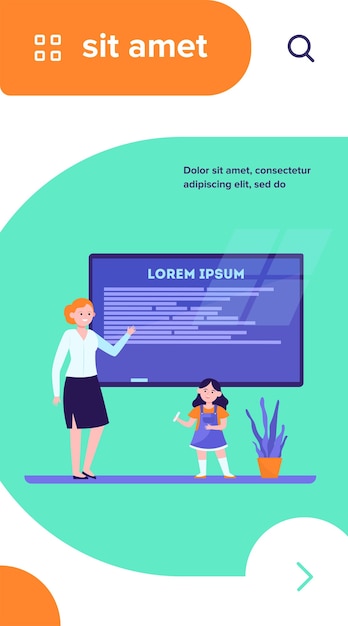Maximize Your Refund: A 2025 Guide to Claiming the EITC

Claiming the Earned Income Tax Credit (EITC) in 2025 can significantly boost your tax refund; learn about eligibility, how to apply, and strategies to maximize your credit amount.
Want to boost your tax refund in 2025? The Earned Income Tax Credit (EITC) could be the answer. This valuable tax break helps low- to moderate-income workers and families, but claiming it correctly is essential to maximize your benefits. Let’s explore how to navigate the EITC in 2025 and potentially increase your refund.
Understanding the Earned Income Tax Credit (EITC)
The Earned Income Tax Credit (EITC) is a refundable tax credit designed to benefit working individuals and families with low to moderate income. It effectively reduces the amount of tax you owe and may even result in a refund. Understanding the basics of the EITC is crucial for determining your eligibility and maximizing your potential credit.
What is the EITC?
The EITC is a government initiative that incentivizes work and provides financial relief to eligible taxpayers. Unlike some other tax credits, the EITC is refundable, meaning that even if you don’t owe any taxes, you can still receive a refund for the full amount of the credit.
Why is the EITC Important?
The EITC plays a vital role in poverty reduction and economic empowerment. It helps low-income families meet their basic needs, improve their financial stability, and invest in their future. The EITC can be a significant source of income for those who qualify.

Several factors determine the amount of EITC you can claim. The IRS provides detailed information on these factors, which can be found on their official website. These factors include:
- Your earned income: The amount of money you earn from working.
- Your adjusted gross income (AGI): Your gross income minus certain deductions.
- Your filing status: Whether you are single, married filing jointly, head of household, etc.
- The number of qualifying children you have: Children who meet certain age, relationship, and residency tests.
Understanding the EITC is essential for ensuring that you take advantage of all available tax benefits. This credit can make a significant difference in the financial well-being of eligible workers and families. By understanding the EITC, taxpayers can potentially boost their tax refunds in 2025.
EITC Eligibility Requirements for 2025
To be eligible for the EITC in 2025, you must meet certain requirements. These criteria are based on income levels, filing status, and other specific conditions. Meeting these eligibility requirements is the first step in claiming the credit.
General Requirements
There are several general requirements that you must meet to be eligible for the EITC. These include having a valid Social Security number, being a U.S. citizen or resident alien, and not being claimed as a dependent on someone else’s return.
Income Limits for 2025
The income limits for the EITC vary based on your filing status and the number of qualifying children you have. These limits are updated annually by the IRS.
Here’s a general overview of what to expect in 2025 (keep in mind these are based on projections and historical trends from previous years, and the IRS will publish the actual numbers):
- Single, Married Filing Separately, or Head of Household with No Qualifying Children: The income limit will likely be around $16,000.
- Married Filing Jointly with No Qualifying Children: The income limit will likely be around $23,000.
- With One Qualifying Child: Income limits may range between $45,000 and $52,000 depending on filing status.
- With Two Qualifying Children: Income limits may range between $50,000 and $57,000 depending on filing status.
- With Three or More Qualifying Children: Income limits may range between $53,000 and $60,000 depending on filing status.
Qualifying Child Requirements
If you have qualifying children, they must meet specific requirements to be counted for the EITC. These requirements include age, relationship, and residency tests.

A qualifying child must:
- Be under age 19 at the end of the year (or under age 24 if a student).
- Be your son, daughter, stepchild, adopted child, brother, sister, stepbrother, stepsister, half-brother, half-sister, or a descendant of any of them (e.g., grandchild, niece, nephew).
- Live with you in the United States for more than half the year.
- Not file a joint return with their spouse (unless they are filing solely to claim a refund of withheld income tax or estimated tax paid).
Meeting all the eligibility requirements is crucial for claiming the EITC. Be sure to check the latest guidelines provided by the IRS to ensure that you qualify for the credit in 2025. If you meet these requirements, you can proceed to claim the EITC when you file your taxes.
How to Claim the EITC in 2025: A Step-by-Step Guide
Claiming the EITC involves several essential steps, from gathering necessary documents to accurately completing your tax return. This guide provides a step-by-step overview to help you navigate the process effectively.
Step 1: Gather Necessary Documents
Before you start filling out your tax return, gather all the necessary documents. This will ensure that you have the information you need to accurately claim the EITC.
Important documents include:
- Social Security cards for you, your spouse (if filing jointly), and any qualifying children.
- W-2 forms from all employers.
- 1099 forms if you are self-employed or received other types of income.
- Records of any expenses that may qualify for tax deductions.
Step 2: Determine Your Filing Status
Your filing status affects the amount of EITC you can claim. Determine whether you are single, married filing jointly, head of household, or another filing status.
Step 3: Complete Form 1040 and Schedule EIC
To claim the EITC, you must complete Form 1040 and Schedule EIC (Earned Income Credit). Schedule EIC requires you to provide information about your qualifying children.
Here are some tips for completing the forms accurately:
- Double-check all Social Security numbers and other identifying information.
- Enter your income and other financial information accurately.
- Follow the instructions on Schedule EIC carefully to ensure that you provide all required information about your qualifying children.
Step 4: File Your Tax Return
Once you have completed Form 1040 and Schedule EIC, file your tax return. You can file electronically or by mail.
Claiming the EITC is a straightforward process, but it’s essential to follow each step carefully to ensure accuracy. By gathering the necessary documents, determining your filing status, completing the required forms, and filing your tax return, you can successfully claim the EITC and potentially boost your tax refund in 2025.
Strategies to Maximize Your EITC Refund
Maximize your EITC refund by understanding income adjustments, claiming all eligible deductions, and ensuring accurate reporting. Strategic planning can significantly impact the amount you receive.
Accurately Report All Income
Ensure all income sources are accurately reported on your tax return to comply with IRS regulations. This includes wages, self-employment income, and other earnings.
Claim All Eligible Deductions
Identify and claim all eligible deductions to reduce your adjusted gross income (AGI). Lowering your AGI can increase your EITC eligibility.
Adjust Your Withholdings
Adjust your W-4 form with your employer to optimize tax withholdings throughout the year. Properly managed withholdings can prevent overpayment or underpayment of taxes.
Income adjustments and tax planning tips to maximize your refund:
- Contribute to tax-deferred retirement accounts to lower your AGI.
- Deduct eligible expenses such as student loan interest and tuition fees.
- Consult with a tax professional for personalized advice tailored to your financial situation.
Maximize your EITC refund begins with accurate reporting, claiming eligible deductions, and adjusting withholdings. Strategic tax planning tailored to your circumstances can result in a more substantial refund in 2025. Seek professional advice to navigate specific financial details effectively.
Common Mistakes to Avoid When Claiming the EITC
When claiming the EITC, avoid common errors such as neglecting to verify Social Security numbers, calculating income inaccurately, and failing to update personal information. These errors can cause delays or denials of your credit.
Incorrect Social Security Numbers
Verify Social Security numbers for yourself, your spouse, and qualifying children to avoid EITC delays or denials. An exact match with Social Security Administration records is essential.
Inaccurate Income Reporting
Ensure accurate income reporting from all sources. Misreporting income, whether intentional or accidental, can lead to penalties or loss of EITC eligibility.
Failing to Meet Residency Requirements
Confirm you meet all residency requirements for qualifying children. A child must live with you in the United States for over half the year to be eligible for EITC.
Avoid EITC errors to ensure a smooth filing process:
- Verify all Social Security numbers against Social Security cards.
- Use W-2 and 1099 forms to report income exactly as stated.
- Track the number of days a qualifying child lives with you to meet residency requirements.
Claiming the EITC error-free requires attention to detail and accuracy. Double-check Social Security numbers, report income correctly, and meet residency requirements to facilitate a seamless filing process.
Resources and Assistance for Claiming the EITC
Numerous resources and assistance programs are available to help you navigate the EITC claim process. IRS resources, volunteer services, and professional consultation can guide you through eligibility and application.
IRS Resources
The IRS provides various resources to support taxpayers claiming the EITC. These resources include publications, online tools, and telephone assistance.
Volunteer Income Tax Assistance (VITA)
VITA offers free tax help to individuals who qualify. IRS-certified volunteers provide basic income tax return preparation with electronic filing to qualified individuals.
Tax Professionals
Consulting a tax professional can offer tailored advice based on your financial situation. Tax professionals can assist with EITC claims, maximize refunds, and navigate complex tax situations.
Resources to streamline the EITC claiming process and obtain assistance:
- Utilize IRS Publication 596 for comprehensive information on the EITC.
- Find the nearest VITA site by visiting the IRS website or calling their helpline.
- Seek assistance from a qualified tax professional for complex tax scenarios.
Claiming the EITC can be simplified with available resources and assistance programs. From IRS materials to VITA services and tax professionals, support is accessible to help maximize eligible refunds. Take advantage of these resources to ensure accurate and beneficial EITC claims.
| Key Point | Brief Description |
|---|---|
| ✅ Eligibility Criteria | Meet income, residency, & SSN requirements. |
| 📝 Required Forms | File Form 1040 & Schedule EIC accurately. |
| 💰 Maximize Your Credit | Correct income & claim eligible deductions. |
| 🤝 Seek Assistance | Use IRS resources, VITA, or tax pros for help. |
Frequently Asked Questions (FAQ)
▼
You are eligible if you have low to moderate income and meet specific requirements. This includes having a valid Social Security number, being a U.S. citizen or resident alien, and not being claimed as a dependent on someone else’s return.
▼
You will need your Social Security card, W-2 forms from all employers, and 1099 forms if you are self-employed. If you have qualifying children, you also need their Social Security numbers and proof of their residency.
▼
Having qualifying children can significantly increase the amount of the EITC you can claim. The income limits also vary depending on the number of qualifying children you have.
▼
If you made a mistake, you should file an amended tax return (Form 1040-X) to correct the error. Provide any additional information or documentation to support your claim.
▼
You can get help from the IRS website, Volunteer Income Tax Assistance (VITA) sites, or a qualified tax professional. These resources can provide guidance and support to ensure you claim the EITC correctly.
Conclusion
Claiming the Earned Income Tax Credit in 2025 can provide a much-needed financial boost to eligible workers and families. By understanding the eligibility requirements, following the proper steps, and avoiding common mistakes, you can maximize your tax refund and improve your financial well-being. Make the most of available resources and assistance to ensure a smooth and successful claim process.





